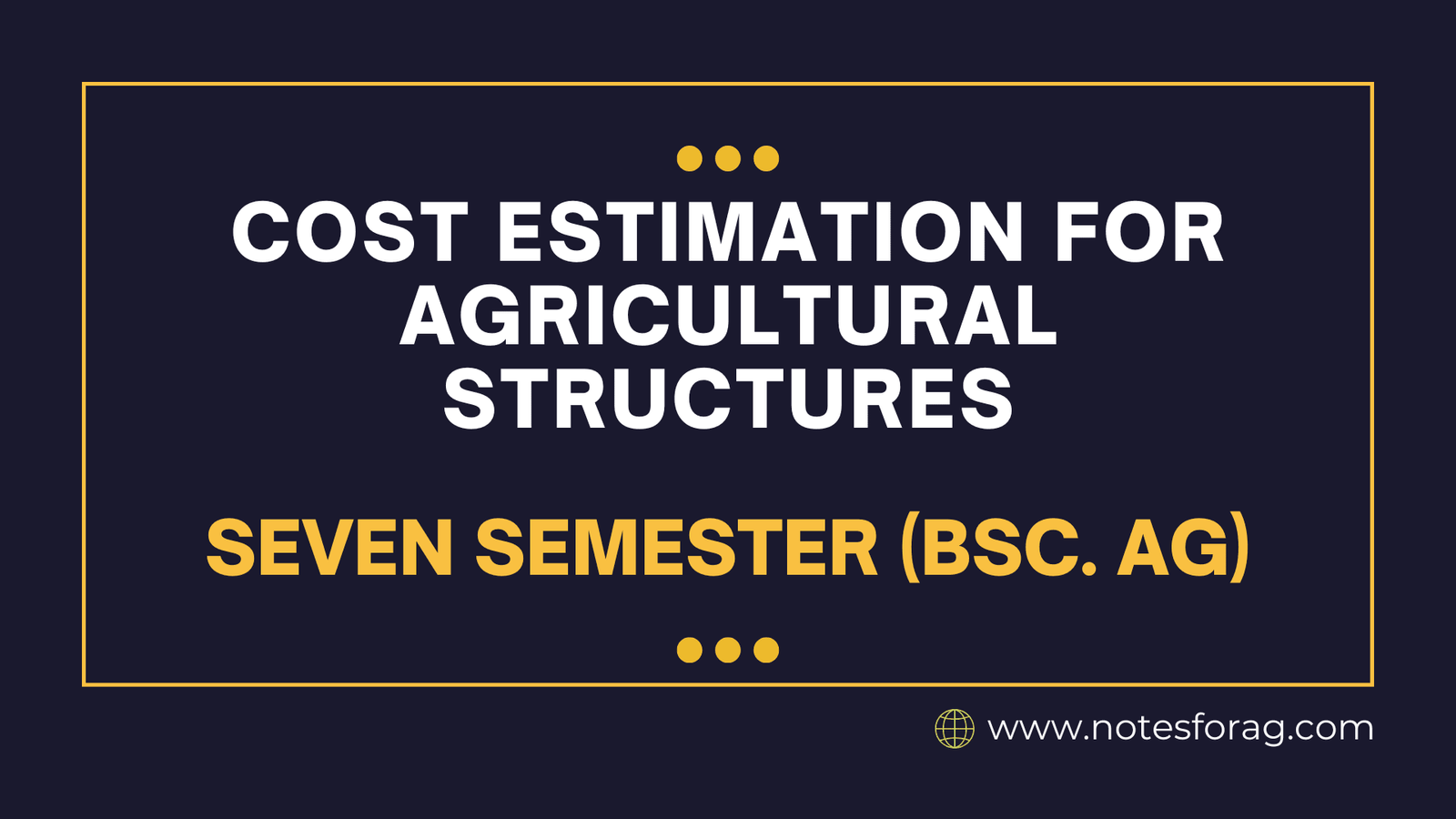Cost Estimation
Cost estimation is an essential part of planning agricultural projects, such as building grain storage, greenhouses, or barns. It helps ensure the project stays within budget, provides an accurate cost estimate, and allows for better decision-making. There are two main types of estimates: approximate estimates and detailed estimates.
Table of Contents
Types of cost Estimation
The types of cost estimation are,
Approximate Estimate
An approximate estimate gives a rough idea of the project cost early in the planning process. It’s based on past projects or average unit costs, rather than detailed calculations.
Purpose: Provides a quick estimate for budgeting and early decision-making.
Method: Uses average costs or similar projects to estimate the total cost.
Accuracy: Not highly accurate, with a possible error margin of 15-20%.
For example, an approximate estimate for building a grain silo might be calculated by multiplying the cost per cubic meter of a silo by the estimated volume of grain to be stored.
Detailed Estimate
A detailed estimate is much more precise and involves breaking down the project into its individual parts, such as materials, labor, and other costs.
Purpose: To provide an accurate and reliable cost estimate for the entire project.
Method: Involves calculating the exact quantity of materials, labor, and overheads, and assigning unit rates to each.
Accuracy: More accurate, typically with less than 5% error margin.
For example, a detailed estimate for building a greenhouse would list the exact quantities of materials (like steel, glass, and irrigation systems), their costs, and labor costs.
Steps for Preparing a Detailed Estimate
To prepare a detailed estimate for an agricultural structure, follow these steps:
Step 1: Understand the Project Requirements
First, gather all the project details, such as the size, design, materials, and location of the structure.
Step 2: Quantity Survey
Calculate the quantity of materials needed, such as concrete, steel, or timber.
Step 3: Unit Rates and Material Costs
Find the cost per unit of each material (e.g., cost per cubic meter of concrete or per ton of steel).
Step 4: Labor Costs
Estimate the number of workers needed and the time required for each task, then calculate the labor costs.
Step 5: Overhead Costs
Include indirect costs such as transportation, permits, equipment rentals, and any unexpected expenses (usually 5-10% of the total cost).
Step 6: Total Cost Calculation
Add up all the costs (materials, labor, overheads) to get the total project cost.
Step 7: Review and Finalize
Double-check the estimates for accuracy and completeness.
Analysis of Rate
Rate analysis helps break down the cost of each component (materials, labor, overheads) and shows how the total project cost is calculated. It ensures transparency and accuracy in the cost estimation process.
Key Components of Rate Analysis
Material Costs
Calculate the total quantity of materials required (e.g., how much concrete, steel, etc.) and multiply by their respective unit costs.
Labor Costs
Calculate the total labor cost by multiplying the number of workers by their hourly wage and the time they’ll work.
Overhead Costs
These are indirect costs, like transport, equipment rentals, and administration, which are added as a percentage of the direct costs.
Contingency
A contingency fund (usually 5-10% of the total cost) is set aside for unexpected expenses.
Example:
For building a grain silo, you might calculate:
Material cost: Concrete (50 tons), Steel (100 tons), Gravel (200 cubic meters).
Labor cost: 10 workers for 30 days at $20 per hour.
Overhead: Transport costs, equipment rental, and insurance.
Each cost component is calculated separately and then added up to determine the total cost.
Conclusion
Cost estimation is crucial for planning agricultural structures like grain storage or greenhouses. It helps ensure that projects stay within budget. The detailed estimate gives an accurate picture of costs by breaking down the materials, labor, and other expenses. The rate analysis ensures that each cost is clear and justified. Accurate cost estimation helps avoid unexpected costs and ensures the project is completed successfully.
Frequently Asked Questions (FAQ)
What is cost estimation?
Cost estimation is the process of predicting the expenses associated with a project. For agricultural structures, this includes estimating the costs of materials, labor, overhead, and other associated costs like transportation and permits.
Why do I need a detailed estimate?
A detailed estimate provides an accurate cost calculation, which helps in budgeting, securing financing, and ensuring that the project stays within budget. It helps avoid cost overruns and ensures you know exactly what each part of the project will cost.
Related Articles

